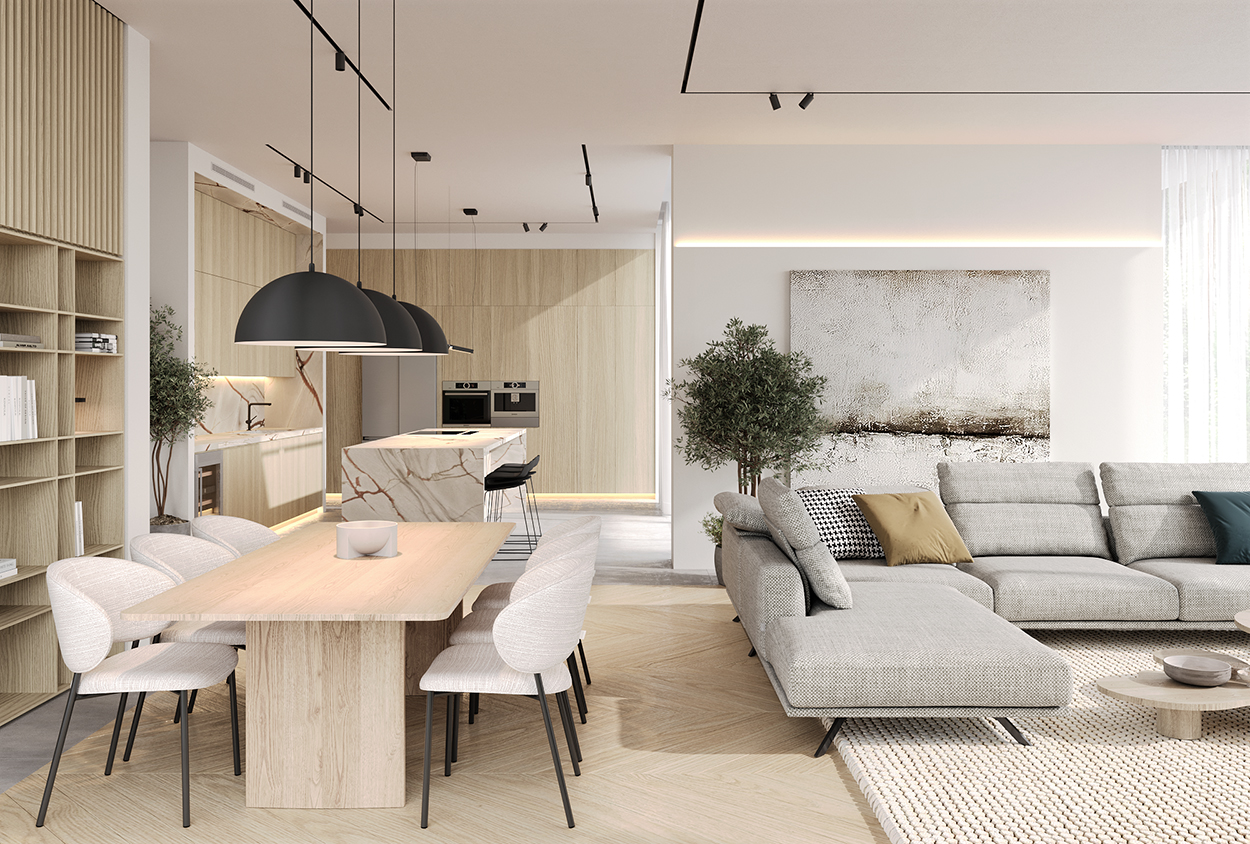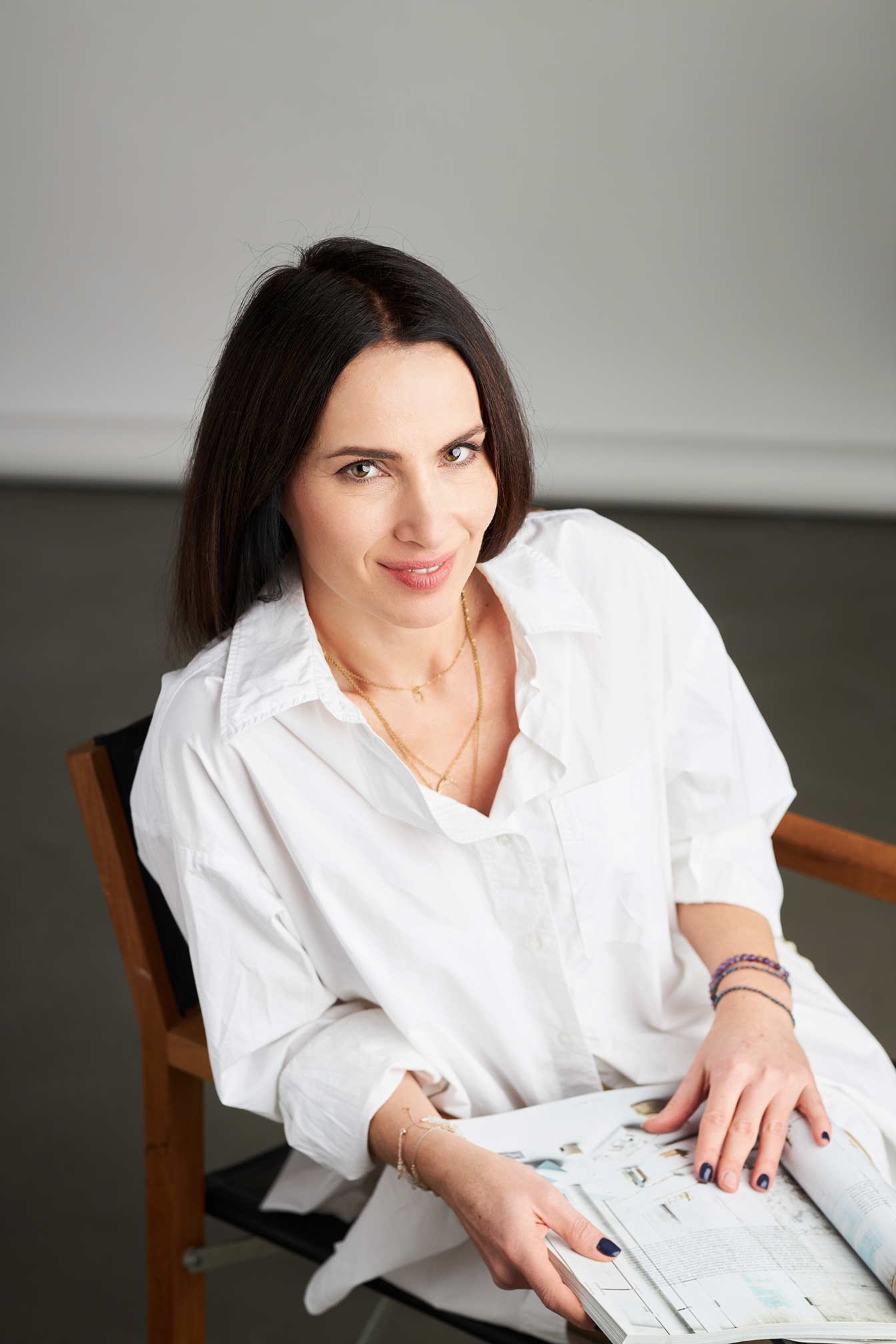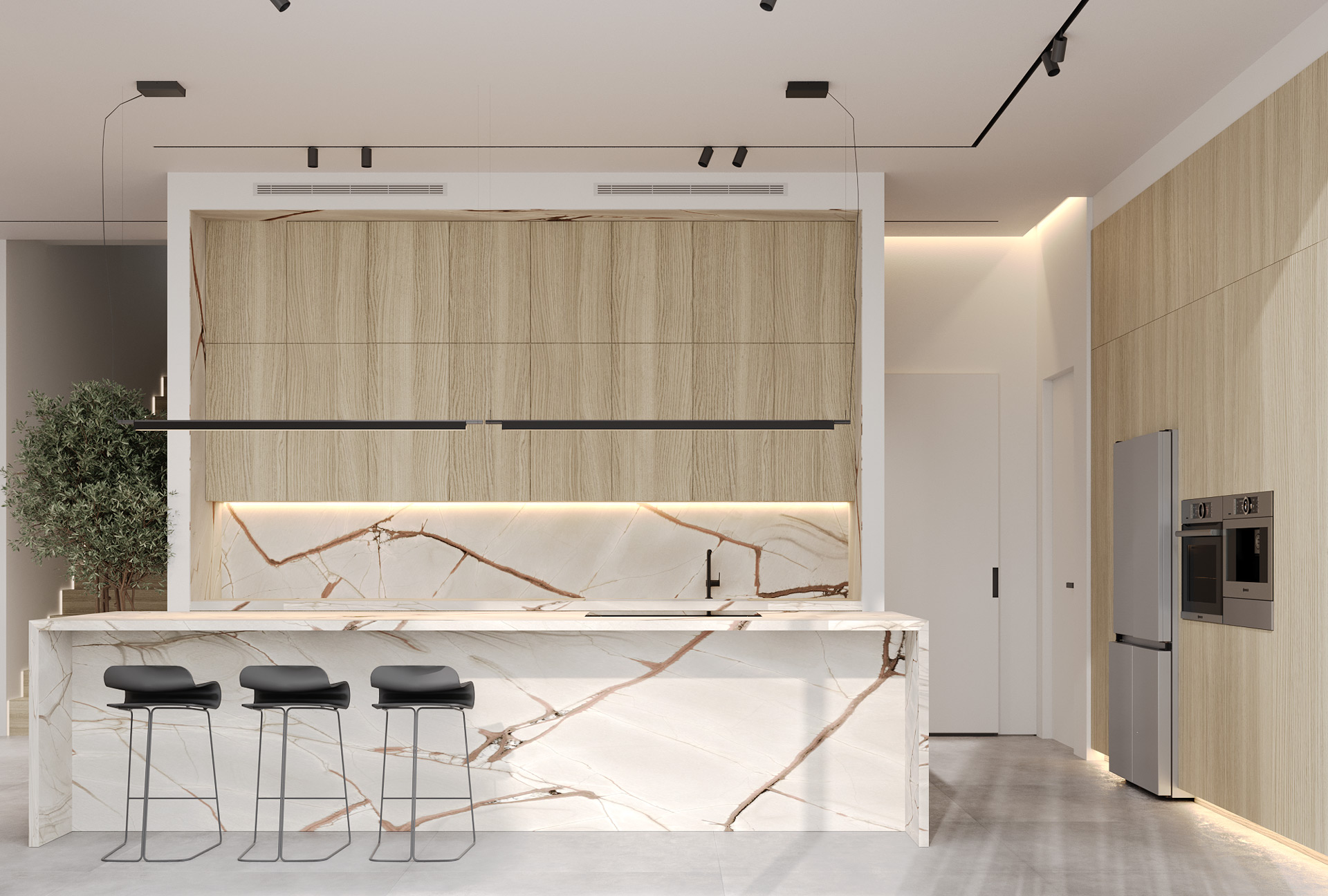Project preparation process
The process of preparing a project is intricate and demands unwavering commitment, extensive expertise, and continuous development of design skills from our entire team.
We utilize professional software to execute our projects, and we actively pursue opportunities to enhance our knowledge by participating in industry trips to renowned locations like Milan for Design Week iSaloni, Munich and Cologne in Germany, and various interior design events in Poland.

Interior design presents us with an exciting challenge, and our aim is to achieve mutual satisfaction with its execution. That’s why each project involves a minimum of four experts, including myself.
Our work on a project can be divided into several distinct stages, each requiring unique competencies and potentially serving as separate services:
Stage 1
Collaborating with the client to determine the desired aesthetic and functional aspects of the rooms, as well as establishing the initial budget required for project implementation. I personally gather project data through a thorough interview with the Investor, allowing us to build a relationship. We don’t rely on sending questionnaires for information gathering.
Meetings can be conducted either at the studio’s office or through an online meeting platform, providing flexibility for clients located anywhere in Poland or around the world.
The outcome entails:
- Engaging in project discussions and establishing implementation objectives.
- Formalizing the contract.
- Conducting precise measurements of the initial state of the investment, accompanied by photographic documentation. Alternatively, we can utilize accurate measurements provided by a commissioned company (commonly done for foreign projects) or receive precise files from the developer or building architect.
This stage demands my psychological abilities, coupled with up-to-date knowledge of current trends and design solutions, in order to adeptly extract clear guidelines from the client for our ongoing collaborative efforts.

Stage 2
Using the information gathered in stage 1, we create two layout options that maximize the available space. These proposals are developed as 2D projections.

The outcome entails:
Function systems – organizing different functionalities within the space, represented by 2D projections.
The process and outcome of this stage form the cornerstone of a successful project. Two revisions are included in the contract, while additional changes are subject to additional charges.
Once the final functional layout is approved, we proceed to Stage 3.
Stage 3
The most impressive and crucial phase of the project – CREATION.
Engaging in conceptual work for the interior design, which demands a blend of creativity in aesthetic explorations and practicality in budgeting for their execution.
At the beginning of this stage, I initiate extensive discussions about the inspirations gathered by the investor, as well as those prepared by myself and the team, showcasing sample images that define the style and individual preferences. Working with visuals facilitates collaboration with the client, eliminating the need for their in-depth knowledge of trends, styling, or the history of interior design.

This stage of collaboration is the most interesting, creative and enjoyable for our clients.
The outcome entails:
Providing photorealistic visualizations that accurately represent the real materials, equipment, colors, and textures used in the design solutions.
Two changes to the visualization can be made as part of the project, while any additional changes will incur additional charges.
Once the final visualizations are approved, we embark on the longest and most challenging stage of the process – the preparation for implementation.
Stage 4
We begin by engaging in the process of creating detailed design documentation, which demands technical expertise in the chosen solutions and specialized professional skills honed through experience.
We initiate discussions regarding the final selection of materials and products that have been showcased in the visualizations.
We carefully consider the list of suppliers and contractors, drawing upon our industry knowledge, technical proficiency, and financial acumen to provide guidance on cost estimation for materials and labor.
Korzystając z naszego doświadczenia i kontaktów -oszczędzamy czas i pieniądze naszych klientów.
Leveraging our extensive experience and network of contacts, we strive to save our clients both time and money. Rather than requiring numerous trips to various stores, we streamline the process by arranging a single appointment with me to create a material Mood Board. This personal interaction is crucial for tactile engagement with textures and experiencing authentic colors, which can be challenging to achieve during online meetings.
Using the visualization and arrangements discussed during our meeting, we proceed to create the following:
- Comprehensive statements outlining the required materials and complete equipment necessary for project implementation, including alternative options.
- Technical drawings encompassing the agreed-upon materials and equipment, serving as reference for the teams executing the project:
- Guidelines detailing the arrangement of walls, door openings, and planned electrical, plumbing, and heating installations.
- Floor and ceiling projections, as well as wall layouts, for all rooms designed by our team.
- Drawings of custom-designed furniture.
- Detailed project specifications.
The outcome of the fourth stage is an essential component of every project—a user manual. We place significant emphasis on ensuring the clarity and comprehensibility of our drawings.
The standards set by Artewizjon have been developed over 17 years of experience in the construction industry and extensive consultations with contractors. These standards enable seamless execution without any excuses or compromises.
Stage 5
Overseeing the execution of construction works which entails not only technical expertise but also the ability to make informed decisions and exhibit strong organizational skills. It involves overseeing the realization of the original design concepts and coordinating the efforts of multiple teams.
Interestingly, this also extends to interpersonal relationships, as effective collaboration with subcontractors and suppliers on the construction site is crucial for success.

(The term “implementation supervision” is intentionally introduced to differentiate it from author’s supervision).
Interior architects typically oversee the execution of their own projects, as it is an essential aspect of their work that investors expect.
For an interior designer, author’s supervision is a natural consequence of being the project’s creator. With comprehensive knowledge of the project and its intricacies, the designer is well-equipped to handle any challenges that may arise during implementation. I collaborate with authorized contractors, installers, and site managers. Therefore, as the project’s authors, we are the most qualified to supervise its execution.
This stage involves signing a separate implementation agreement that outlines the specific number of hours and the communication method between the investor, architect, and tradespeople.
As part of the project, the client is entitled to a package of hourly telephone consultations throughout the duration of the project.
